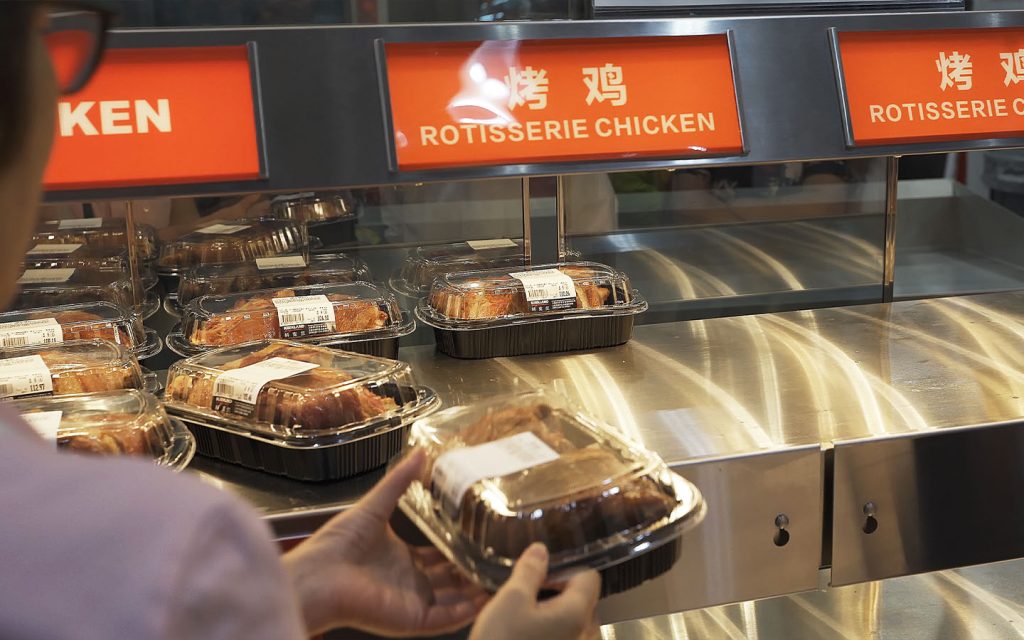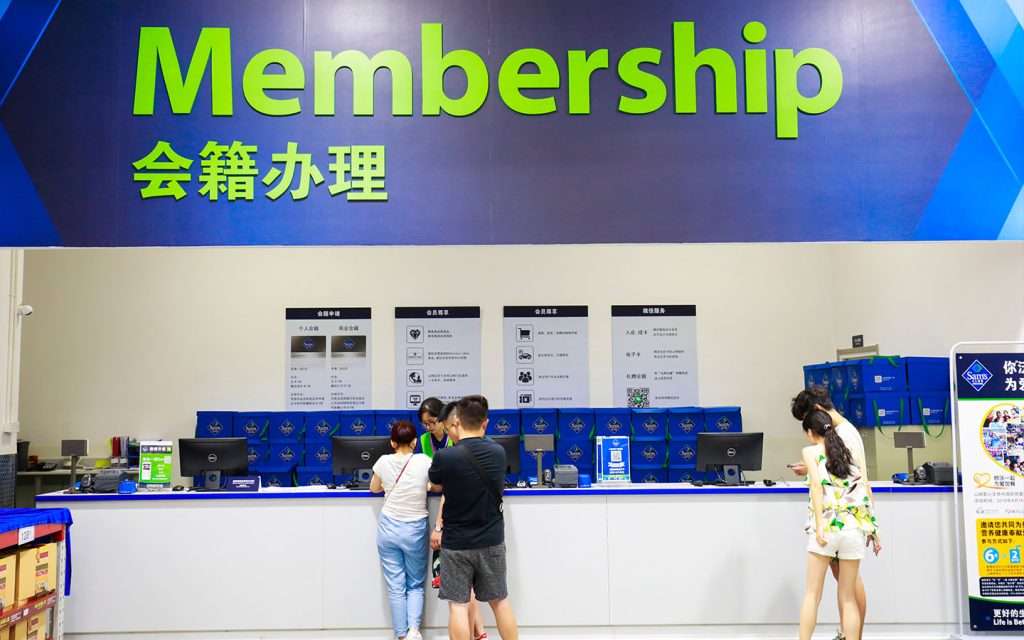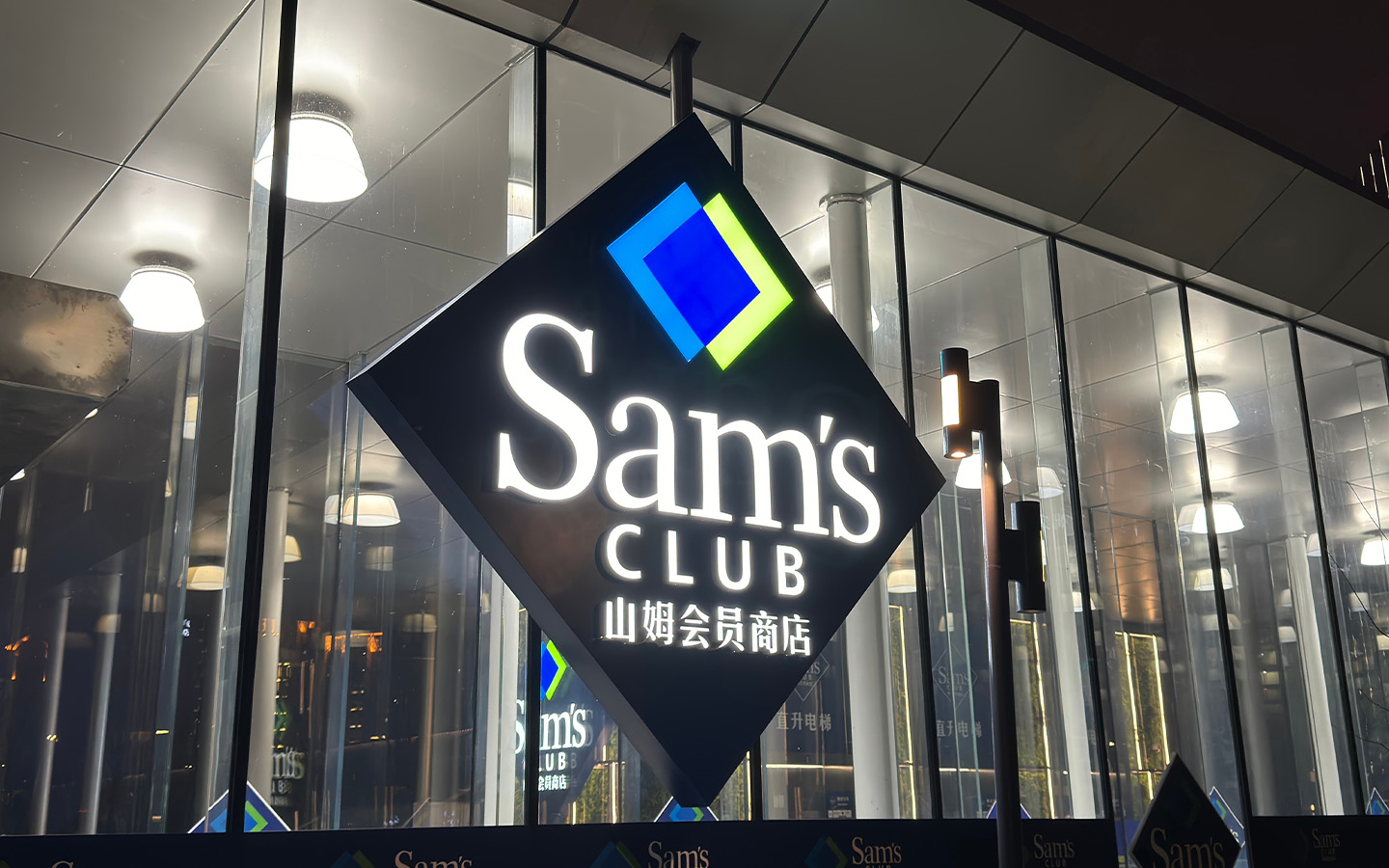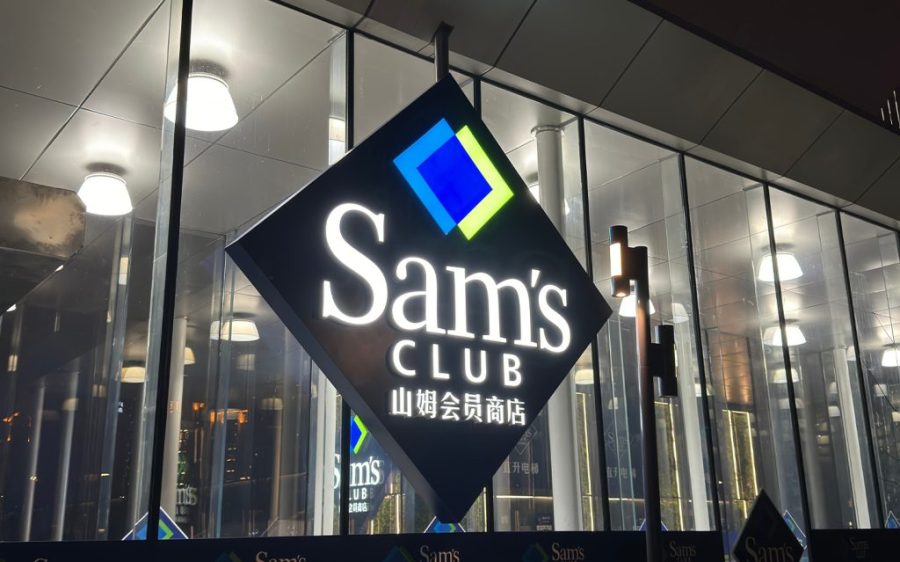In recent years, Chinese consumers have developed a voracious appetite for members-only supermarket chains such as Sam’s Club and Costco. Unlike traditional retailers, these so-called warehouse clubs require customers to pay for membership before they are allowed to enter their no-frills stores to purchase low-cost, wholesale products.
The popularity of such wholesale clubs among Chinese consumers was highlighted by the China Chain Store & Franchise Association’s latest Top 100 Supermarkets in China report, which noted that “the sales volume and number of membership and discount stores continued to rise” in the country in 2024.
For instance, Walmart – the company behind Sam’s Club – retained its position as China’s leading supermarket chain last year, generating a sales volume of 158.84 billion yuan (US$22.25 billion), a jump of 19.6 percent year-on-year. Rival company Costco also performed robustly, bagging 17th place with a sales volume of 8.7 billion yuan (US$1.22 billion), a growth of 58.2 percent year-on-year.
[See more: Shenzhen just opened China’s largest downtown duty-free store]
So great is China’s enthusiasm for membership stores that it has even made international headlines. When Costco opened its first store in Shanghai in 2019, the BBC reported that the store had to close down several hours earlier in response to “overcrowding.” Similar scenes reemerged when Wenzhou opened its inaugural Sam’s Club in 2024.
Read on to find out what the buzz is all about and how to apply for a Sam’s Club or Costco membership.
Why are Sam’s Club and Costco becoming so popular in China?
Membership retailers have seen significant growth in the mainland in recent years due to a variety of reasons. Among them is the country’s sluggish economy, which has made low-price chain stores more attractive to Chinese consumers.
As the CEO of Walmart International, Kath McLay recalled during an investment community meeting this year, “in China, a member told me she doesn’t have to shop around for the best prices,” because“she trusts Sam’s Club to always have the lowest prices on whatever her family needs.”
[See more: Trade-in scheme continues to uphold retail spending in China]
The reputation that Sam’s Club and Costco have for high-quality products have also helped to draw customers. As one business executive told the South China Morning Post last year, Sam’s Club has a product line that “feels more curated” than regular supermarkets, allowing shoppers to “start developing this habit that [Sam’s Club has] already done the selection for you.”
Outside of external factors, warehouse clubs in China, especially Sam’s Club, have made an effort to adapt to the local culture by offering products and brands that are aligned with the tastes of Chinese consumers. A quick glance over the Sam’s Club product catalogue reveals Chinese favourites such as packaged crayfish and abalone, as well as an assortment of frozen steamed buns. Similarly, the company has been making a concerted effort to expand its online presence through a home delivery service.

What products do Sam’s Club and Costco sell?
Sam’s Club and Costco sell bulk items across a wide range of categories from everyone’s favourite brands including Converse, Coca-Cola, Colgate and Cadbury.
Much like regular supermarkets, you’ll find aisles for food products such as bread, biscuits, cakes, meat, snacks, drinks, canned products and ready-to-eat dishes such as sushi and roast chicken. There are also sections dedicated to household and lifestyle items such as shoes, electronics, blankets, toiletries and bicycles.
[See more: Hit by rising costs, US retailers are demanding that Chinese firms pay for shipping]
One of the main selling points of Sam’s Club and Costco is their private labels, which provide members with high-quality products at a competitive rate. For instance, Member’s Mark, the in-house brand of Sam’s Club, offers a 24 pack of bottled 300 millilitre mineral water for just 22.8 yuan. Meanwhile, the Member’s Mark 1.2 kilogram Swiss Roll is a steal, costing just 59.8 yuan.
Costco’s private brand, Kirkland, is competitively priced as well. At the time of writing, Kirkland’s butterflied chicken with lemon and herbs was on sale for 25.90 yuan per kilogram. Similarly, a blackcurrant mousse cake was priced at just 45.90 yuan.
How much is Sam’s Club and Costco membership in China?
Sam’s Club membership is split into a standard and premium tier. Standard membership costs 260 yuan per year and grants you the right to enter and purchase goods at any of Sam’s Club stores across China and worldwide. You may also give one member of your household a complimentary membership card and bring up to two people with you during each visit.
Premium Sam’s Club membership is priced at 680 yuan per year and offers all the perks of the standard card plus more. With this tier, you can receive a 2 percent rebate for specific items (capped at 500 yuan per month and), 12 free monthly delivery coupons, as well as 20 percent off eyewear items. Other benefits are available as well, they will vary depending on the location.
[See more: Luxury retailer DFS will quit the M8 shopping mall, report says]
Costco China currently only offers Gold Star membership, which costs 299 yuan per year. The card allows you to make purchases across any Costco locations worldwide. You can give a member of your household a complimentary card and bring along two people with you when shopping at a Costco store. Costco membership also has some other benefits, including free eye and ear tests, as well as free tyre inflation service.

Is membership worth it?
That depends. Before applying for warehouse club membership, you should consider (1) how quickly your household can consume bulk-sized items (2) how often you intend to go to the warehouse club (3) how much storage space you have in your house for bulk-sized goods (4) how far you live from the warehouse club.
If your household is large and able to consume large amounts of food and household items quickly, a Sam’s Club or Costco membership could be an effective way to save on costs, as you will quickly recoup the fee.
[See more: Macao’s retail sector is in trouble. How long can small businesses hold out?]
For those who live by themselves or in small families, buying in bulk could backfire, as you will most likely end up purchasing more items than you need, leading to waste. Similarly, if you only intend to shop at a membership store occasionally and in small amounts, you will very likely not save enough to make up for the money spent on membership.
How do I apply for membership?
For those carrying a foreign passport or a mainland travel permit for Macao and Hong Kong residents, the easiest and least stressful way to register for membership is to head over to one of the application counters located in any of the Sam’s Club or Costco physical stores.
Before applying in-store, ensure you do the following:
(1) Download the relevant Sam’s Club or Costco China app on your phone. The Sam’s Club app is arguably the more user-friendly of the two, as it is more flexible and has an English-language option, allowing for easier navigation for those who can’t read Chinese.
(2) Set up the Chinese e-wallet app WeChat Pay on your phone for payment.
(3) Prepare a mainland, Macao or Hong Kong number that can receive the warehouse club’s verification code in the mainland.
(4) Carry your ID or foreign passport with you.
[See more: A billion dollar revamp is on the cards for Hong Kong’s top retail spaces]
After you have done the above, head over to the application counter of your chosen warehouse club. The staff member will help you navigate to the “purchase membership card” page on your app where you can input your full name, ID or passport number, delivery address and phone number. They will also assist you with ID and phone verification, as well as any other additional steps.
The final two steps will require you to pay for the membership fee using WeChat and to take a photo of yourself for your digital membership card.
Your digital Sam’s Club or Costco membership card can now be accessed via the relevant app. You can use it to enter and make purchases at any of their branches worldwide.

Where can I find a Sam’s Club or Costco in China?
Finding a Sam’s Club or a Costco in any of the major Chinese cities isn’t particularly difficult. When comparing the two, Sam’s Club is currently the dominant force, as the chain’s 48 stores are spread across 24 major cities, including Beijing, Shanghai, Nanjing and Shenyang.
Within the Greater Bay Area, Sam’s Club has 7 branches in 3 cities – 4 in Shenzhen, 2 in Guangzhou and 1 in Zhuhai. A new store in Zhongshan is also expected to open on 10 September. Specific details about the locations of these stores can be found on the Sam’s Club website.
[See more: Macao’s reputation as a luxury retail destination ‘is only going to grow’, experts say]
Costco has significantly less stores, with a current total of only seven. Two stores are located in Shanghai, while the rest can be found in Shenzhen, Suzhou, Ningbo, Hangzhou and Nanjing. For more details about the location of these stores, click here.
I’m hungry. Tell me about the cafes in Sam’s Club and Costco.
All the various Sam’s Club and Costco stores in China have a cafe where you can purchase various food and drinks. The menu at Sam’s Club cafes can vary depending on the location, although you can expect to find items such as fried chicken, pizza, cakes, hamburgers, beef rolls and soft drinks. Costco cafes offer the same kinds of food, with their menu being more consistent across stores.
Payment can be conducted via the Sam’s Club or Costco cafe WeChat mini apps or over the counter.






